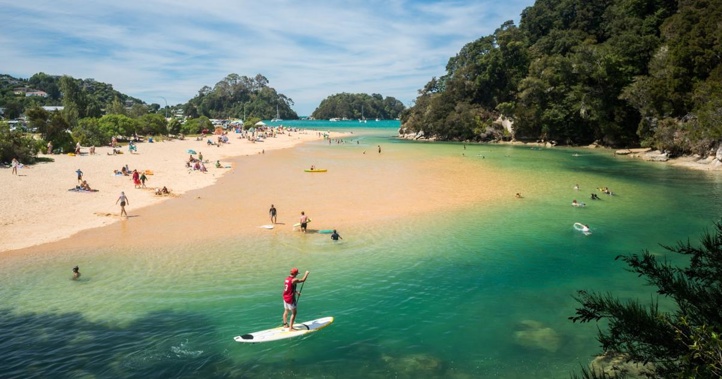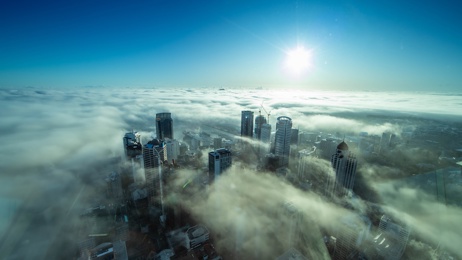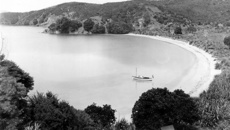
It is helpful, at times, to obtain the perspective of someone from outside New Zealanders’ usual frame of reference. Events that seem extraordinarily important to us can strike recent arrivals as trivial in the extreme. This is particularly true of those who hail from nations steeped in histories as long as they are bloody. Their reaction to our little woes all-too-easily recalls Fred Dagg’s ditty: We don’t know how lucky we are!
This was driven home to me a few years ago when Vincent O’Malley’s The Great War For New Zealand was provoking vigorous discussion and debate about events which, back in the 1970s, had been referred to, unselfconsciously, as “The Māori Wars”.
A friend and I were fiercely debating the fight at Rangiaowhia. Was it a massacre? Or was it, like most military engagements, a furious mess of fear, anger and death? What was the body count – 12 or 17?
A senior academic, newly arrived from Türkiye, had been listening to our debate, and interjected. “Which was it, 12,000 or 17,000”.
Both of us stared at her uncomprehendingly – until the penny dropped. “Oh! No, no, no!”, I laughed. “We’re arguing whether it was 12 people killed, or 17.”
I shall never forget the look of disbelief – mixed with just the tiniest tincture of contempt – that passed across her face. Coming from a land whose soil, over more than a score of centuries, has soaked up the blood of millions, these Kiwis were arguing over an encounter in which fewer than 20 lives were lost! She simply could not take us, or the fight at Rangiaowhia, seriously. With a pitying look, she left us to it.
Reading O’Malley’s essay on Rangiaowhia, published on the Newsroom website on Tuesday morning, I couldn’t help recalling the reaction of the Turkish professor. O’Malley’s retelling of the “incident” at Rangiaowhia, which took place on February 21, 1864 – 160 years ago – reads like a description of the Mongol hordes descending upon some defenceless Anatolian town, instead of British troops surprising a prosperous Tainui village, which also just happened to be the strategic locus of the King Movement’s food supply.
At Rangiaowhia the British were, at least in initially, as surprised as the village’s inhabitants. Given its vital logistical importance to the King Movement’s forces, they had expected it to be stoutly defended by Māori warriors. But the several dozen cavalry troopers who charged into the village found only women and children who, not surprisingly, fled before them. Doubtless, a number of these were killed: run down by the horses or reeling beneath the sabres of psyched-up troopers.
The incident for which Rangiaowhia is best remembered, however, is the burning whare. Going to the aid of a trooper who had been abducted by the villagers and was being held in one of their homes, a senior British officer, going by by the splendid Victorian name of Marmaduke Nixon, was shot and killed by someone firing from inside the whare. Enraged, Nixon’s men poured musket fire into the dwelling. Exactly how the whare caught fire is sharply contested by witnesses and historians alike. Tainui blame the British. The British blamed the muzzle flashes of muskets discharged inside the whare igniting its raupō thatching.
Whatever the cause of the fire, there is little dispute about what happened next. Those attempting to flee the flames were shot down as they emerged from the whare. All told, seven Māori, were killed in and around the whare. Other British officers ordered the soldiers to hold their fire, but to no avail. Furious at the death of their commander, uncertain as to who was shooting from the whare, blinded by smoke, and in fear of their lives, Nixon’s men were in no mood to take prisoners. When the smoke had cleared, and the village had been secured, the British counted a 12 dead and as many wounded.
But rather than describe it for what it was – a tragic example of what can happen in the “fog of war” – O’Malley decks out Rangiaowhia in all the lurid colours of colonial oppression.
“Some first-hand accounts from those who took part in the assault on Rangiaowhia claimed the hut had caught fire accidentally, as a result of guns fired at close range through the raupō thatching. That would be a natural assumption to make among those who did not witness what really took place (or were trying to conceal it). Others maintained that multiple huts had been deliberately torched. There is no reason why they should have made up such a story.”
Such tendentiousness ill becomes a professional historian. “What really took place” has been hotly disputed for more than a century. And can the man be serious when he asks what reason Tainui could possibly have for making up such a story?
Quite apart from the historical tendency of those on the losing side of a battle or a war to present their conquerors in the worst possible light – all the better to keep the fires of vengeance burning brightly – there is plain, old-fashioned guilt.
On February 21, 1864, Rangiaowhia was undefended. Why? Because the Tainui warriors were waiting for the British forces to attack their formidable pa at Pāterangi. Except that General Cameron, advised by Māori fighting for the British Crown, did the tactically sensible thing and took his soldiers and cavalry around the pa, and on to the King Movement’s logistical hub at Rangiaowhia. When those troopers emerged from the mist that February morning 160 years ago, there was no one in Rangiaowhia with the weapons to stop them.
Not all historians are motivated to present the victors of Rangiaowhia as the living embodiment of colonialist evil. Māori historian David Green, for example, concludes it was not “a premeditated massacre but a breakdown of discipline among troops who had psyched themselves up to face much stronger resistance”.
Elsewhere in his Newsroom essay, O’Malley makes much of Governor George Grey’s failure to implement Section 71 of the Constitution Act of 1852. This section held out the possibility of establishing self-governing “native districts”. I’m glad Grey and his successors let that possibility slide. Had the Crown not done so, then the most likely outcome would have been a New Zealand dotted with Māori reservations. Ostensibly “sovereign territory”, like their American counterparts, such districts would, in a very short space of time, have become neglected concentrations of indigenous powerlessness, poverty and despair.
The Māori who resisted the Crown in the 1860s may not have been able to dodge Cameron’s musket balls but, bearing in mind the fate of other indigenous peoples in the English-speaking settler states, they certainly dodged a bullet.
Which is a great deal more than can be said for the Kurdish minority in Türkiye.
Take your Radio, Podcasts and Music with you









